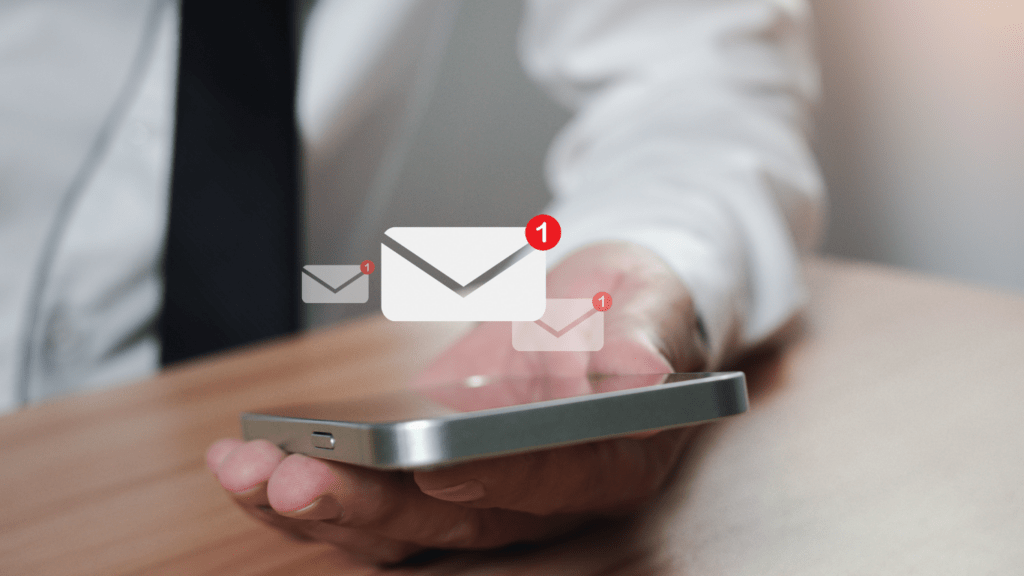Understanding Email Marketing
Email marketing represents a strategic approach to communication that leverages email as a channel to reach audiences. It aims to inform, engage, and convert subscribers. Understanding the core elements of email marketing is vital for achieving successful campaigns.
Purpose of Email Marketing
The primary goal of email marketing is to build relationships with subscribers by delivering valuable content. Whether aiming to encourage repeat purchases, promote new products, or educate users, each email should align with this purpose. According to the Data & Marketing Association, email has a median ROI of 122%.
Key Components of Email Marketing
- Audience Segmentation: Dividing your subscribers into specific groups (e.g., age, location) can improve relevance. Segmented campaigns have been shown to drive 760% more revenue than non-segmented ones.
- Personalization: Customizing emails to cater to individual subscriber preferences increases engagement. Addressing recipients by name and tailoring content based on past interactions can boost open rates by 26%.
- Compelling Subject Lines: Crafting engaging subject lines can significantly influence open rates. Subject lines with fewer than 10 words have higher open rates, as per Campaign Monitor statistics.
- Clear Call-to-Action (CTA): Each email should include a clear and actionable CTA (e.g., “Shop Now,” “Learn More”). This guides subscribers on what action to take next, enhancing conversion rates.
- Mobile Optimization: Ensuring emails are mobile-friendly is critical. Litmus reports that 46% of email opens occur on mobile devices.
Measuring Email Marketing Success
Monitoring key metrics allows for evaluation and optimization of email campaigns. Important metrics include:
- Open Rate: The percentage of recipients who open your email.
- Click-Through Rate (CTR): The percentage of recipients who click on links within your email.
- Conversion Rate: The percentage of recipients who complete the desired action after clicking a link.
- Bounce Rate: The percentage of emails that could not be delivered.
- Consistency: Sending regular emails (e.g., weekly newsletters) keeps your audience engaged.
- A/B Testing: Experimenting with different email elements (e.g., subject lines, CTAs) helps identify what works best.
- Compliance with Laws: Adhering to regulations like GDPR ensures lawful email practices and maintains trust.
By understanding and implementing these fundamentals, marketers can develop effective email campaigns that resonate with their audience and drive results.
Building A Quality Email List

A strong email marketing campaign starts with a quality email list. Developing this list strategically ensures higher engagement and better conversion rates.
Opt-In Strategies
Effective opt-in strategies are fundamental for building a quality email list. Encourage visitors to subscribe through clear calls-to-action on your website’s homepage, blog, and checkout pages. Use pop-ups or slide-ins at strategic times, like when a user is about to leave the site. Offer value-driven incentives, such as exclusive content, discounts, or free trials, to motivate sign-ups. When users understand what they’ll gain, they’re more likely to subscribe.
Segmenting Your Audience
Segmentation improves the relevance of your email campaigns. Categorize subscribers based on demographics, purchase history, engagement levels, or preferences. Send personalized content tailored to each segment’s interests. For instance, send product recommendations to frequent buyers or share educational content with new subscribers. Use segmentation tools to automate this process, ensuring each group receives the most relevant messages. Higher relevance equals better engagement and conversion rates.
Crafting Effective Emails
Creating impactful emails requires a mix of compelling subject lines, personalized content, and responsive design. Here’s how to master each component.
Writing Compelling Subject Lines
Subject lines drive email open rates. Use actionable language, such as “Discover” or “Get,” to prompt the reader to take action. Keep them concise, ideally under 50 characters. Incorporate curiosity or urgency by including phrases like “Last Chance” or “Don’t Miss Out.” Finally, A/B test different subject lines to identify what resonates best with your audience.
Personalizing Email Content
Personalization makes emails feel relevant. Use subscribers’ first names in the salutation to create a connection. Segment your audience based on preferences, purchase history, or engagement levels to tailor content. Dynamic content blocks, which change based on user data, provide specific relevance, such as recommending products based on past purchases. This targeted approach increases engagement and conversion rates.
Designing Responsive Templates
Readers access emails on various devices. Responsive templates ensure your email looks good on screens of all sizes. Use a single-column layout with clear, large fonts for readability on mobile devices. Compress images to improve load times without sacrificing quality. Test your emails on multiple devices to confirm consistent appearance and functionality. This attention to design details enhances user experience and reduces bounce rates.
Analyzing Performance Metrics
Understanding key performance metrics is critical for refining email marketing strategies and maximizing results. Analyzing these metrics gives insights into what’s working and what needs improvement.
Open Rates
Open rates indicate the percentage of recipients who open emails. This metric shows the effectiveness of subject lines and send times. An optimal open rate ranges between 15% and 25%. To improve open rates, I use A/B testing for subject lines. Engaging subject lines drive higher open rates.
Click-Through Rates
Click-through rates (CTR) measure the percentage of recipients clicking on at least one link in an email. A healthy CTR falls between 2% and 5%. High CTRs signify compelling content and effective calls-to-action (CTAs). I enhance CTAs by making them clear and visually striking. I also segment the audience to ensure relevance.
Conversion Rates
Conversion rates track the percentage of recipients completing the desired actions, like making a purchase or signing up for an event. Good conversion rates hover around 2% to 5%. This metric reflects the success of not just the emails but the entire campaign funnel. To boost conversions, I align email content with recipients’ needs and optimize landing pages for consistency.
Avoiding Common Pitfalls
Maintaining high deliverability and engagement rates requires avoiding common email marketing pitfalls. Below, I’ll detail strategies to prevent issues like spam filters and unsubscribes.
Preventing Spam Filters
High deliverability starts by avoiding spam filters. Email servers flag content based on certain triggers, so it’s crucial to send compliant emails.
- Use Double Opt-in: Verify subscribers’ interest by using a double opt-in procedure, confirming email addresses, and maintaining a quality list.
- Avoid Spammy Words: Stay away from terms like “free,” “earn money,” or “urgent.” These words often trigger spam filters.
- Check IP Reputation: Ensure the sending IP address has a clean reputation. Poor IP standing can lead to blocked emails.
- Authenticate Emails: Utilize SPF, DKIM, and DMARC authentication protocols. These methods validate sender identity and improve trust with email servers.
- Maintain List Hygiene: Regularly clean the email list. Remove inactive subscribers and invalid addresses to reduce bounce rates.
Managing Unsubscribes
Handling unsubscribes gracefully maintains brand integrity and subscriber trust. Make the process straightforward to ensure positive experiences.
- Easy Opt-out Links: Include a visible and easy-to-use unsubscribe link in every email. This transparency fosters trust.
- Preference Management: Offer an email preference center. Allowing subscribers to choose the frequency and type of emails can reduce complete opt-outs.
- Immediate Unsubscription: Process unsubscribe requests instantly. Any delays can frustrate users and harm your reputation.
- Feedback Collection: Ask for feedback when users unsubscribe. Understanding their reasons can provide insights for improving future campaigns.
- Monitor Metrics: Keep an eye on unsubscribe rates. A rising rate might indicate problems with email content, frequency, or relevancy.
Leveraging Automation Tools
Automation tools streamline email marketing, making it easier to manage large audiences and ensure consistent engagement. Utilizing these tools, I’ve found several strategies to enhance my campaigns effectively.
Automated Welcome Sequences
Automated welcome sequences create a positive first impression, ensuring new subscribers feel valued from the start. When a user subscribes, the system immediately sends a personalized welcome email acknowledging their subscription. This initial email often includes a thank you message, an overview of what they can expect in future communications, and possibly an exclusive offer or incentive. For example, welcome sequences can include discount codes or exclusive content access, which helps build a connection with the new subscriber.
Drip Campaigns
Drip campaigns deliver a series of pre-written emails based on a set schedule, helping keep subscribers engaged over time. These emails gradually provide valuable content, such as educational resources or promotional offers, tailored to the subscriber’s journey. For instance, a new customer might receive a sequence of educational emails about product features, followed by promotional emails highlighting special offers. This approach ensures that subscribers receive consistent communication, which helps in nurturing relationships and guiding them toward conversion.
Behavior-Triggered Emails
Behavior-triggered emails respond directly to subscribers’ actions, delivering highly relevant and timely content. By setting up triggers based on specific behaviors, such as website visits or product purchases, I can ensure subscribers receive emails that align with their interests. For instance, if a subscriber abandons their shopping cart, an automated email reminding them of their pending purchase, possibly with an incentive to complete the transaction, is triggered. This method increases the likelihood of engagement and conversion by addressing specific needs and actions.



